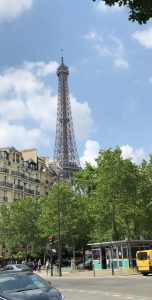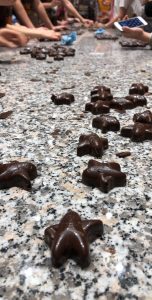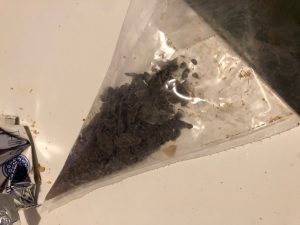This is my last blog post, as the trip has come to an end. I want to write about my visit to the popular tourist destinations, including the Notre Dame, the Arc de Triomphe, the basilica, the Louvre, and the Eiffel tower.
I was amazed by Paris because it was so different from any other cities that I have lived in. I tend to make decisions that will take me to a novel environment, such as the decision of studying abroad in the U.S. for college and studying abroad in Paris during the summer. This kind of decision-making (novelty seeking) is suggested to be supported by the neurotransmitter dopamine in my brain (Costa, Tran, Turchi, & Averbeck, 2014). After review literature about dopamine’s functions, I now feel more comfortable about the topic. To everyone in the program, I am thankful for the dopamine in your brain: it helped you make the decision of going on this trip; Otherwise, we would not have met.
I remember that while I was riding a cab to my apartment, I looked out the window, and the Notre Dame was right there. It made me realize how close I will get to some of the most iconic sites in the world.
The Arc of Triomphe, the Basilica, and the Louvre were full of tourists. Building a major traffic circle at the Arc of Triomphe is probably not the best idea, and the traffic there is bad. I was scammed at the Basilica, but I only gave the scammers 20 cents when they asked for 20 euros. The view of the city at the top was fantastic and almost made me forget about the scam. I am not an art person, so I just took selfies with famous artworks in the Louvre and left.

Finally, I love the Eiffel tower. I can see it every day when I walk to class and when I shop for grocery. It serves as a constant reminder that I am in Paris. After a while, I kind of get used to it, but every time I look up and see the tower afar, I take a deep breath and tell myself: You are in Paris, the most beautiful city in the world. Classes can be stressful and overwhelming, but I appreciate the opportunity of spending five weeks living and studying in Paris. For many people, this may be their dream. Enjoy your life, because we are living the dream.

Reference
Costa, V. D., Tran, V. L., Turchi, J., & Averbeck, B. B. (2014). Dopamine Modulates Novelty Seeking Behavior During Decision Making. Behavioral Neuroscience, 128(5), 556–566.http://doi.org.proxy.library.emory.edu/10.1037/a0037128




